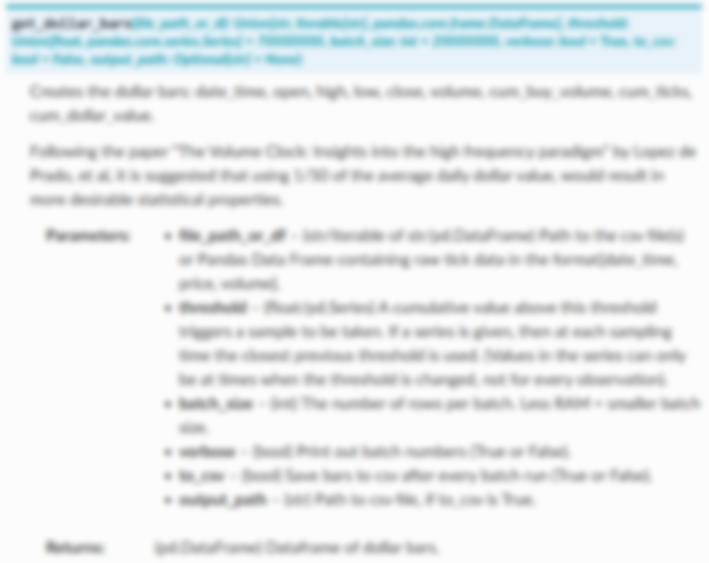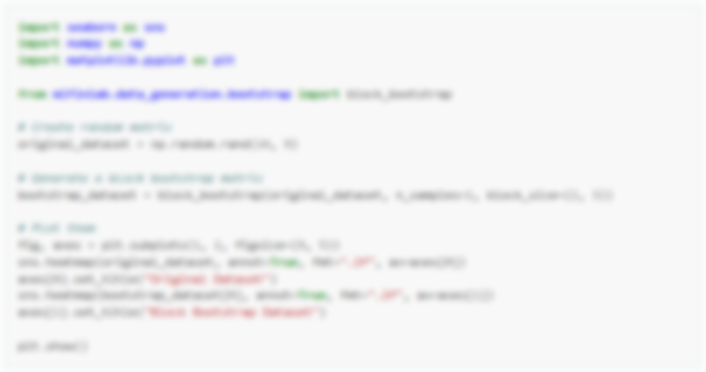Raw Returns¶
Labeling data by raw returns is the most simple and basic method of labeling financial data for machine learning. Raw returns can be calculated either on a simple or logarithmic basis. Using returns rather than prices is usually preferred for financial time series data because returns are usually stationary, unlike prices. This means that returns across different assets, or the same asset at different times, can be directly compared with each other. The same cannot be said of price differences, since the magnitude of the price change is highly dependent on the starting price, which varies with time.
The simple return for an observation with price \(p_t\) at time \(t\) relative to its price at time \(t-1\) is as follows:
And the logarithmic return is:
The label \(L_t\) is simply equal to \(r_t\), or to the sign of \(r_t\), if binary labeling is desired.
If desired, the user can specify a resampling period to apply to the price data prior to calculating returns. The user can also lag the returns to make them forward-looking.
The following shows the distribution of logarithmic daily returns on Microsoft stock during the time period between January 2010 and May 2020.

Distribution of logarithmic returns on MSFT.¶
Implementation¶
Research Notebook¶
The following research notebook can be used to better understand the raw return labeling technique.


